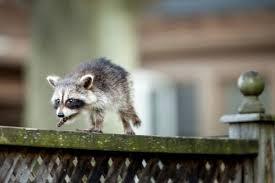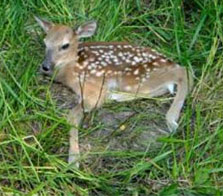
INDIANA – The emergence of spring means young wildlife will begin appearing throughout Indiana, from our state’s forests to your own backyard.

If you encounter a young wild animal that appears to have been left alone, keep calm. Adult wild animals rarely abandon their young and will likely return after gathering food for the family.
Check back periodically on the young animal and look for signs that an adult has been attending to them, but don’t hover. If the found animal is in a nest, you can pour a ring of flour around it to help you determine if an adult animal has returned while you were away.

The Department of Natural Resources does not provide services for orphaned or injured wildlife and is regulated by the DNR. Never compromise personal safety to help wildlife.
If the animal you find is injured or in distress (bleeding, weak, covered in flies, has broken bones), contact a wildlife rehabilitator instead of trying to care for the animal yourself. Wild animals require different care than domesticated pets. Wildlife rehabilitators are trained and permitted to care for many different wild species. They will be equipped to care for the animal while allowing it to retain its natural fear of humans so it can return to and survive in the wild.
It is unlawful for an individual to possess a wild animal without a proper permit. Good intentions can still harm wildlife. If an animal does need assistance, it is important that a properly licensed professional is contacted. Professionals have training, facilities, and resources to properly assist wildlife and ensure the animal is capable of fending for itself when released.



